Archives
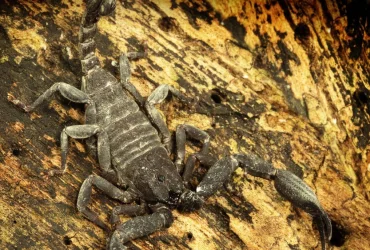 v11i1.273
v11i1.273ISSN: 1800-427X (printed)
eISSN: 1800-427X (online)
DOI:10.47605/tapro.v11i1.273
Submitted date: 15 November 2021
Accepted date: 21 February 2022
Published date: 23 May 2022
Pp. 12–24, pls. 4–5.
A NEW SPECIES OF THE GENUS Oligodon FITZINGER, 1826 (REPTILIA: COLUBRIDAE) FROM SOUTHERN LAOS
Patrick David*, Sjon Hauser & Gernot Vogel
*Corresponding author. E-mail: patrick.david@mnhn.fr
Abstract
A new species of the genus Oligodon Fitzinger, 1826, is described based on two specimens originating from Champasak Province in southern Lao PDR. This species differs from congeners occurring in the Indochinese Region by possessing 15 dorsal scale rows at midbody, an unforked hemipenis, an entire cloacal plate, a relatively low number of ventral plates (150–159), and a dorsal pattern made of 29–30 pale (cream in life or pale yellowish-brown in preservative) crossbands on the body that are narrowly edged with blackish-brown. We compare the new species with other species of the Indochinese Peninsula and China that also have 15 dorsal scale rows, especially O. inornatus (Boulenger, 1914) and O. kampucheaensis Neang, Grismer & Daltry, 2012. Finally, we provide an updated list of the Oligodon species of Laos and an identification key to these species.
Key words : Distribution, Indochinese Region, Kukri, Oligodon inornatus, Southeast Asia, taxonomy
Section Editor: Thasun Amarasinghe
LSID:urn:lsid:zoobank.org
eISSN: 1800-427X (online)
DOI:10.47605/tapro.v11i1.273
Submitted date: 15 November 2021
Accepted date: 21 February 2022
Published date: 23 May 2022
Pp. 12–24, pls. 4–5.
A NEW SPECIES OF THE GENUS Oligodon FITZINGER, 1826 (REPTILIA: COLUBRIDAE) FROM SOUTHERN LAOS
Patrick David*, Sjon Hauser & Gernot Vogel
*Corresponding author. E-mail: patrick.david@mnhn.fr
Abstract
A new species of the genus Oligodon Fitzinger, 1826, is described based on two specimens originating from Champasak Province in southern Lao PDR. This species differs from congeners occurring in the Indochinese Region by possessing 15 dorsal scale rows at midbody, an unforked hemipenis, an entire cloacal plate, a relatively low number of ventral plates (150–159), and a dorsal pattern made of 29–30 pale (cream in life or pale yellowish-brown in preservative) crossbands on the body that are narrowly edged with blackish-brown. We compare the new species with other species of the Indochinese Peninsula and China that also have 15 dorsal scale rows, especially O. inornatus (Boulenger, 1914) and O. kampucheaensis Neang, Grismer & Daltry, 2012. Finally, we provide an updated list of the Oligodon species of Laos and an identification key to these species.
Key words : Distribution, Indochinese Region, Kukri, Oligodon inornatus, Southeast Asia, taxonomy
Section Editor: Thasun Amarasinghe
LSID:urn:lsid:zoobank.org
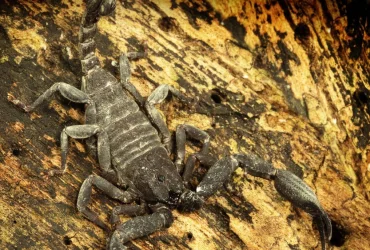 v11i1.272
v11i1.272ISSN: 1800-427X (printed)
eISSN: 1800-427X (online)
DOI:10.47605/tapro.v11i1.272
Submitted date: 24 November 2021
Accepted date: 11 February 2022
Published date: 23 May 2022
Pp. 4–11, pls. 1–3.
ON THE OCCURRENCE OF Scorpiops longimanus (POCOCK, 1893) (ARACHNIDA: SCORPIOPIDAE) IN MIZORAM, NORTHEAST INDIA
Fanai Malsawmdawngliana, Mathipi Vabeiryureilai, Vanlal Siammawii, Lal Muansanga, Gospel Zothanmawia Hmar, Ht Decemson & Hmar Tlawmte Lalremsanga*
*Corresponding author. E-mail: htlrsa@yahoo.co.in
Abstract
In this study, we confirm the occurrence of the tropical forest scorpion Scorpiops longimanus (Pocock, 1893) in Mizoram, India based on specimens collected from 13 different localities within the state. The total length of the animal was found to range from 42.22 mm up to 65.16 mm. The number of trichobothria on the ventral surface of the pedipalp patella and that of the external face alternates between 10–11 and 18–19, respectively. The pectines showed dissimilarities in the structure of the lamellae and in the number of teeth. We generated the first molecular data for the species and performed a maximum likelihood phylogenetic analysis using the partial mitochondrial 16S rRNA gene which showed the formation of a distinct clade of S. longimanus. The uncorrected k2p distance showed an intraspecific genetic variation of 2.9% among the species studies.
Key words : Distribution, molecular phylogeny, Neoscorpii, new record, Orthosterni, Scorpiones
Section Editor: František Kovařík
eISSN: 1800-427X (online)
DOI:10.47605/tapro.v11i1.272
Submitted date: 24 November 2021
Accepted date: 11 February 2022
Published date: 23 May 2022
Pp. 4–11, pls. 1–3.
ON THE OCCURRENCE OF Scorpiops longimanus (POCOCK, 1893) (ARACHNIDA: SCORPIOPIDAE) IN MIZORAM, NORTHEAST INDIA
Fanai Malsawmdawngliana, Mathipi Vabeiryureilai, Vanlal Siammawii, Lal Muansanga, Gospel Zothanmawia Hmar, Ht Decemson & Hmar Tlawmte Lalremsanga*
*Corresponding author. E-mail: htlrsa@yahoo.co.in
Abstract
In this study, we confirm the occurrence of the tropical forest scorpion Scorpiops longimanus (Pocock, 1893) in Mizoram, India based on specimens collected from 13 different localities within the state. The total length of the animal was found to range from 42.22 mm up to 65.16 mm. The number of trichobothria on the ventral surface of the pedipalp patella and that of the external face alternates between 10–11 and 18–19, respectively. The pectines showed dissimilarities in the structure of the lamellae and in the number of teeth. We generated the first molecular data for the species and performed a maximum likelihood phylogenetic analysis using the partial mitochondrial 16S rRNA gene which showed the formation of a distinct clade of S. longimanus. The uncorrected k2p distance showed an intraspecific genetic variation of 2.9% among the species studies.
Key words : Distribution, molecular phylogeny, Neoscorpii, new record, Orthosterni, Scorpiones
Section Editor: František Kovařík
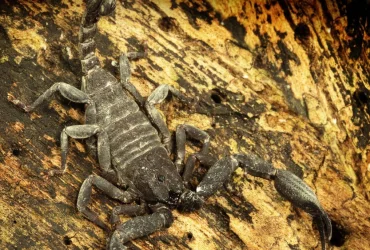 v11i1.271
v11i1.271ISSN: 1800-427X (printed)
eISSN: 1800-427X (online)
DOI:10.47605/tapro.v11i1.271
Published date: 23 May 2022
Pp. 1–3
EDITORIAL : Coronaviruses, bats, and museums
Burton K. Lim
Section Editor: Taprobanica, the journal of Asian Biodiversity
The past two years of the COVID-19 pandemic has taught us a lot about emerging diseases, but also transmission of infections and ways of preventing future outbreaks from spreading globally. However, there is still much to be learned, such as how the culprit coronavirus SARS-CoV-2 mutates into different variants, what is the intermediate host that allowed the virus to jump to humans, and a better understanding of immune responses to this severe acute respiratory illness.
eISSN: 1800-427X (online)
DOI:10.47605/tapro.v11i1.271
Published date: 23 May 2022
Pp. 1–3
EDITORIAL : Coronaviruses, bats, and museums
Burton K. Lim
Section Editor: Taprobanica, the journal of Asian Biodiversity
The past two years of the COVID-19 pandemic has taught us a lot about emerging diseases, but also transmission of infections and ways of preventing future outbreaks from spreading globally. However, there is still much to be learned, such as how the culprit coronavirus SARS-CoV-2 mutates into different variants, what is the intermediate host that allowed the virus to jump to humans, and a better understanding of immune responses to this severe acute respiratory illness.
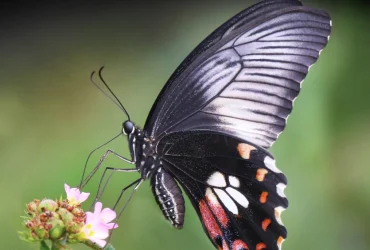 v10i2.270
v10i2.270ISSN: 1800-427X (printed)
eISSN: 1800-427X (online)
DOI:10.47605/tapro.v10i2.270
Submitted date: 28 May 2021
Published date: 22 November 2021
Pp. 146
ERRATUM :Amarasinghe, A.A.T., S. Karunarathna, M. Madawala, and A. de Silva (2021). Two new rupicolous day geckos of the Cnemaspis alwisi group (Reptilia: Gekkonidae) from Sri Lanka. Taprobanica, 10 (1): 23–38 + pls. 3–8.
eISSN: 1800-427X (online)
DOI:10.47605/tapro.v10i2.270
Submitted date: 28 May 2021
Published date: 22 November 2021
Pp. 146
ERRATUM :Amarasinghe, A.A.T., S. Karunarathna, M. Madawala, and A. de Silva (2021). Two new rupicolous day geckos of the Cnemaspis alwisi group (Reptilia: Gekkonidae) from Sri Lanka. Taprobanica, 10 (1): 23–38 + pls. 3–8.
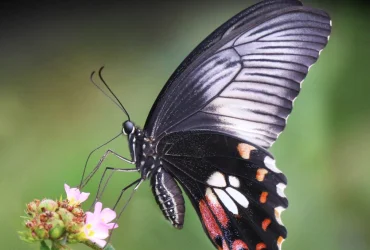 v10i2.269
v10i2.269ISSN: 1800-427X (printed)
eISSN: 1800-427X (online)
DOI:10.47605/tapro.v10i2.269
Submitted date: 26 August 2021
Published date: 22 November 2021
Pp. 140–145
LETTER TO EDITOR: A response to Narayanan et al. (2021) “On the validity of the recently described bush frog Raorchestes kollimalai Gowande, Ganesh & Mirza, 2020” published in Zootaxa
Zeeshan A. Mirza* & Gaurang Gowande
*E-mail: snakeszeeshan@gmail.com
Narayanan et al. (2021) make extremely grave allegations of ‘misrepresentation of data’ by Gowande et al. (2020). Narayanan et al. (2021) found serious flaws in the publication dealing with the description of Raorchestes kollimalai by Gowande, Ganesh & Mirza (2020). The authors state that Gowande et al. (2020) overlooked many errors, which consequently raises questions on the validity of R. kollimalai. We here respond to their comments, dispel their false allegations of misrepresentation of data and provide evidence for the validity of Raorchestes kollimalai. A common practice while writing a response/critique of a published paper is to contact the editor of the journal in which the paper was published, which, in this case, is TAPROBANICA. However, Narayanan et al. (2021) chose to publish their critique in a different journal, ZOOTAXA and thus, were unaware of the erratum to the paper on the new species. The erratum that was published in a recent issue of Taprobanica (Gowande et al. 2021) resolves some of the concerns raised by Narayanan et al. (2021). These concerns were a mistake on the part of Gowande et al. (2020) but by no means did the authors intend to hide or misrepresent data as accused by Narayanan et al. (2021).
eISSN: 1800-427X (online)
DOI:10.47605/tapro.v10i2.269
Submitted date: 26 August 2021
Published date: 22 November 2021
Pp. 140–145
LETTER TO EDITOR: A response to Narayanan et al. (2021) “On the validity of the recently described bush frog Raorchestes kollimalai Gowande, Ganesh & Mirza, 2020” published in Zootaxa
Zeeshan A. Mirza* & Gaurang Gowande
*E-mail: snakeszeeshan@gmail.com
Narayanan et al. (2021) make extremely grave allegations of ‘misrepresentation of data’ by Gowande et al. (2020). Narayanan et al. (2021) found serious flaws in the publication dealing with the description of Raorchestes kollimalai by Gowande, Ganesh & Mirza (2020). The authors state that Gowande et al. (2020) overlooked many errors, which consequently raises questions on the validity of R. kollimalai. We here respond to their comments, dispel their false allegations of misrepresentation of data and provide evidence for the validity of Raorchestes kollimalai. A common practice while writing a response/critique of a published paper is to contact the editor of the journal in which the paper was published, which, in this case, is TAPROBANICA. However, Narayanan et al. (2021) chose to publish their critique in a different journal, ZOOTAXA and thus, were unaware of the erratum to the paper on the new species. The erratum that was published in a recent issue of Taprobanica (Gowande et al. 2021) resolves some of the concerns raised by Narayanan et al. (2021). These concerns were a mistake on the part of Gowande et al. (2020) but by no means did the authors intend to hide or misrepresent data as accused by Narayanan et al. (2021).
Hubungi Kami
The ultimate aim of the journal is to provide an effective medium for communication of the latest and best scientific information.
Copyright © 2020 Taprobanica. All Rights Reserved
Jasa Pembuatan Website by IKT




